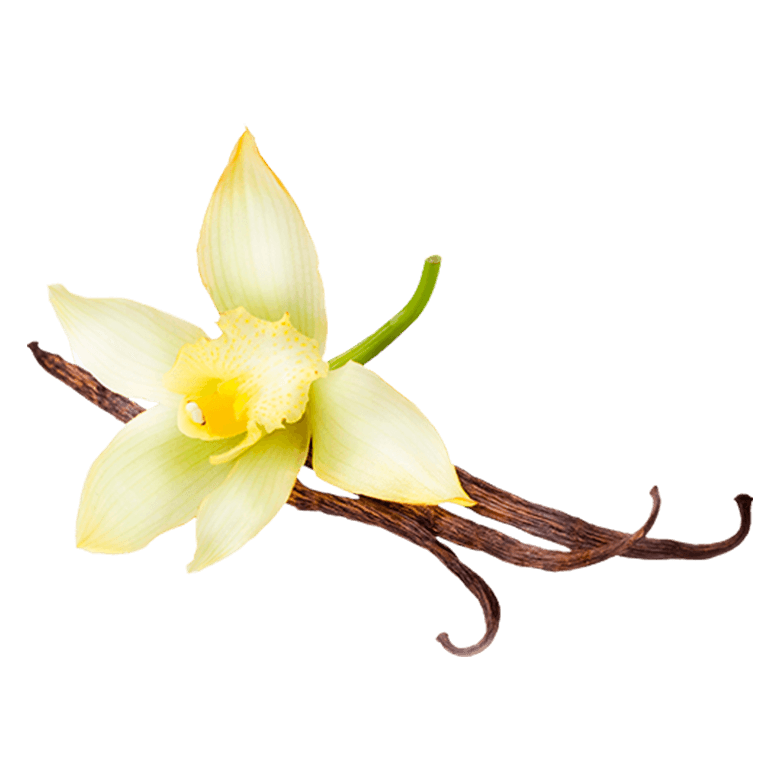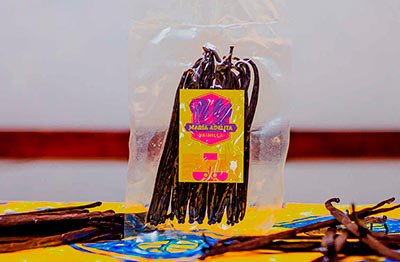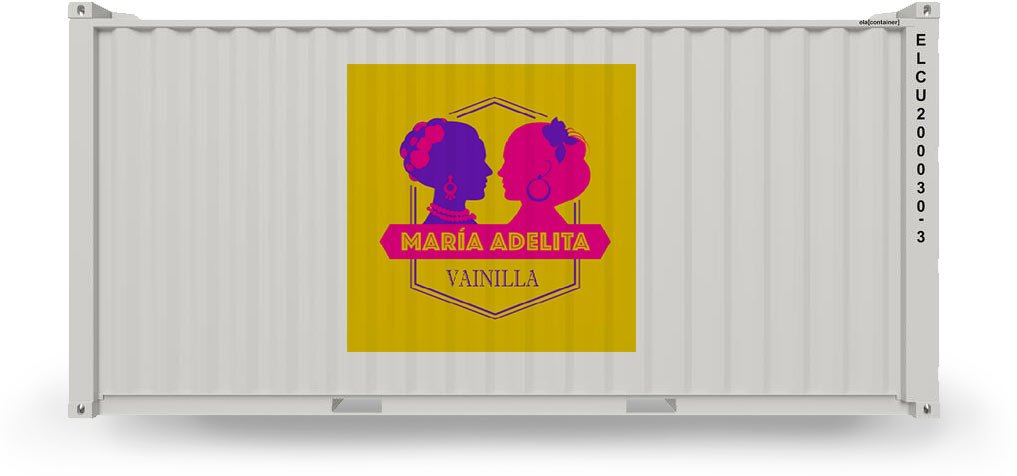María Adelita produces and exports vanilla with protected designation of origin.

What's Vanilla?
Vanilla is an important and valued aromatic species worldwide; It is originally from Mexico, which is the fifth largest producer in the international market. Vanilla fruits (silicones) develop unique physicochemical and sensory characteristics through a traditional fermentation process called «beneficiado» and from them an extract rich in vanillin an organic compound which is the main aromatic agent.
Applications
The extract that is obtained from vanilla is used to add flavor and aroma to various food products mainly, although it also has applications in other industries including pharmaceuticals, cosmetics and tobacco among others.
Vanilla history
In 1520, through the conquerors and missionaries, the news of a new spice reached Spain. In the 18th century, the Spanish, French and English became interested in the production of vanilla, which is why it was taken to greenhouses in Europe. The French began to plant orchids in their colonies, especially on tropical islands, but these did not produce pods (Damiron, 1994).
For almost three centuries the only vanilla producer was Mexico, benefiting from this monopoly until 1841, when manual pollination was discovered. It is important to note that the plant only grows in a tropical climate and in suitable soil. The flowering of vanilla occurs between the months of April and May and lasts for one day and only the pollinated flowers continue their process; that is, to become pods.
The Vanilla Process
The cultivation and preparation of vanilla demands continuous care and wisdom that has been passed down through the generations and our general process is shown below.
The two methods of Beneficiado
The Beneficiado of vanilla is a fermentation process, through which the green fruits, which lack aroma, are drastically modified until exhibiting a dark and bright brown color and aroma and flavor profiles, coming from a mixture of hundreds of compounds where vainillin stands out
The first beneficiado method consists of placing the fruits in the patio so that they receive the sun's rays for several hours. This is done every day until the pod is chocolate brown.
The second method of beneficiado is done with an oven to produce and maintain heat. The curing makes the vanilla enhance its peculiar characteristics such as flavor.
Finally, and after several months of hard work, the vanilla is ready to be marketed.

Our Plantations
Most of the vanilla production is concentrated in the state of Veracruz with 75% of the national total.
Papantla Vanilla is the vanilla produced in 39 municipalities of Puebla and Veracruz in Mexico, is the only one that has a designation of origin and represents one of the most important aromatic spices for the food industry, obtained from the hermaphrodite orchid, whose smell is caused by the sun's rays and aromatizes the entire region.
Plantation Establishment
It is sown from stakes or seeds, although it is common to do so with stakes around 1.5 meters long, together with live stakes spaced 1 to 2 meters between plants and about 3 meters between lines.
Its density is 1,667 plants / ha. The stakes are pruned so that they adopt a “v” shape at a height of 0.70 m, and the vanilla stakes are planted at their feet, so that 3 or 4 of the knots are buried and can pass through the “V”.
The planting is done in a row 10 cm wide by 3 to 4 cm deep and 40 cm long. If it is done in the wet season, they are only placed on the ground and covered with dry leaves.
It is a lively climbing plant that takes root in the ground by means of a succulent, fleshy stem, with dark green internodes, which attaches itself to the trunks and branches that it finds by means of adventitious roots.
The leaves are almost sessile or ovate, sharp at the apex, fleshy, dark green in color and alternately emerge from the nodes of the stems.
The flowers are arranged in cluster-shaped inflorescences and are pale yellow in color; the fruit is a unilocular capsule, pale yellow when ripe, turning dark brown until it opens into two longitudinal valves. The seeds are numerous and tiny, blackish brown in color.

The Mexican Standard
The Mexican Standard NMX-FF-074-SCFI-2009 defines the specifications of the siliques (fruits) that went through the "Beneficiado" process classified in Extra grades and Categories I, II and III and types Gourmet and Ordinary) based on criteria. appearance, color, shine, odor, moisture, size, texture, and vanillin content.
Although there is a Mexican Standard (NMX) that regulates the quality aspects of pods, several criteria are not very precise and a description of the sensory attributes is lacking; therefore, benefited fruits from different localities of Puebla and Veracruz, Mexico, were sampled to characterize them. physicochemical and correlate them with the NMX.







